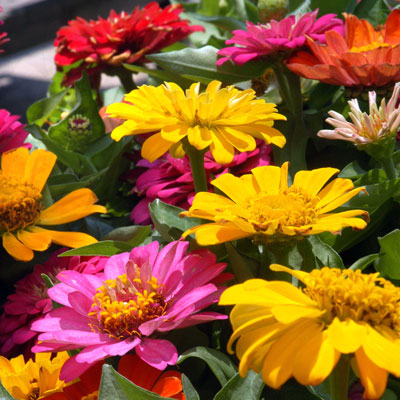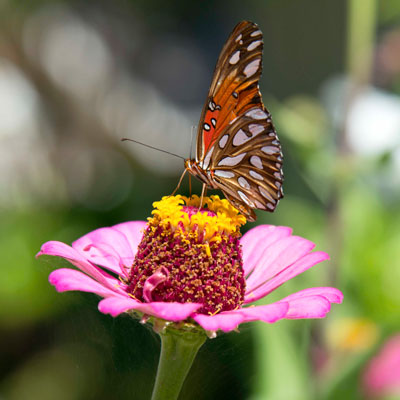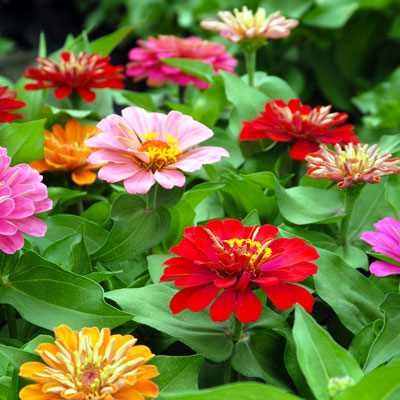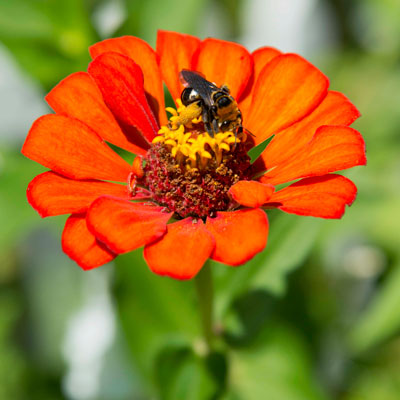Best Zinnias Ever!
If you want a sure-fire crop of glorious color, get busy this weekend. Zinnias await you.

Intensity of colors of zinnias in fall is unequalled.
My history with zinnias
Zinnias were my favorite annuals when I was a kid. Their seeds were large enough for my small fingers, and the tall types’ flowers were as big as my hands. I planted them among my vegetables every spring. That was in College Station.
Then I moved to Ohio, and I marveled at how much richer their colors were. Zinnias there looked like jewels of red, orange, yellow, purple and white. I’d never seen anything like them.
I started graduate school at Colorado State, and part of my assistantship was caring for some hush-hush breeding work they were doing on zinnias. All kinds of zinnias: tall ones with tiny flowers and small ones with flowers bigger than the plants that supported them. Probably one acre of zinnias tightly enclosed in nursery shade fabric to keep pollinating insects away. To this day I believe that the famous Peter Pan zinnias came out of that research, but I’d gotten engaged and had moved back to Ohio, so I never found out.

Gulf Frittilary apparently finds zinnias as appealing as I do.
When we moved back to Texas after graduate school, I kept right on planting zinnias in spring, and I could see the difference in color intensities. We’d visit my wife’s parents in Ohio each summer, and the differences became all the more evident.
And that’s when it hit me. Zinnias planted for a fall garden in Texas would have cooler weather, more like the mild part of an Ohio summer, and sure enough, my fall zinnias were that same brilliant rainbow of colors. And even better, I saw almost none of the powdery mildew that often coated them in spring.

‘Dreamland’ zinnias have been popular over the years. Not as tall as some of the others, their flowers are still very showy.
Zinnias in fall are really quite easy
Hopefully your favorite nursery will have very nice 4-inch potted zinnia transplants ready for you either this week or next. Look for vigorous plants with colorful buds, but preferably not fully in flower. That tends to cause them to stall out after you plant them.
Plant zinnias into well-prepared garden soil to which you’ve added 3 or 4 inches of organic matter and 1 inch of expanded shale and tilled to a depth of 10 or 12 inches. If this is a garden you prepared well for this past spring, you can add half the amount of organic matter as you re-till prior to planting.
Check the plant tags to see your plants’ expected mature height. Taller types tolerate a little crowding, so set the transplants 40 to 50 percent as far apart as they will grow tall.
Firm the soil around your new plants, then water them immediately. I use a water-soluble, high-nitrogen fertilizer applied with a water breaker to get my new transplants off to the best possible start. From that point on, your main goal will be to keep them moist at all times and fertilized every couple of weeks, again with a high-nitrogen food. Texas soils almost always have adequate phosphorus to stimulate good production of flowers.
You don’t have to have massive spaces to be successful with taller zinnias. If you have a few square feet in the back of a perennial garden or along a walk or drive, they’ll be happy to serve you. And it all starts this weekend.

One image that was too nice not to include.
